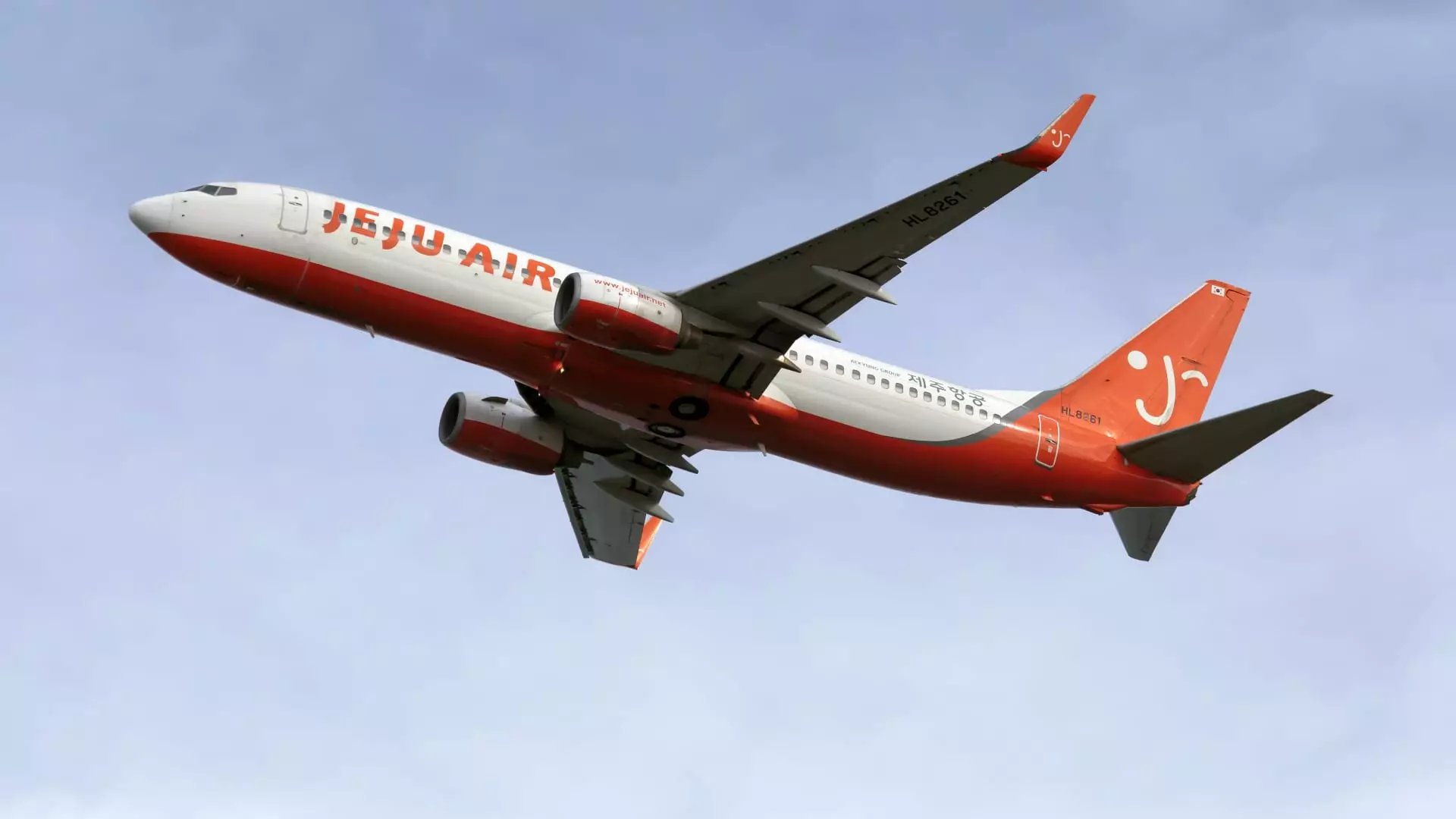On what was meant to be a routine flight, a catastrophic event unfolded at Muan International Airport in South Korea when a Jeju Air Boeing 737-800 made a belly landing without any deployed landing gear. Out of the 181 individuals on board, only two emerged with their lives. This incident, being one of South Korea’s most devastating air disasters in recent memory, raises serious concerns regarding aviation safety and operational protocols. Investigators are now piecing together the events that led to this tragic occurrence while the nation mourns its loss.
The Boeing 737-800, known for its extensive service and solid safety record, has become a staple in global air travel. With nearly 4,400 units operational worldwide, it accounts for around 17% of the total commercial passenger planes currently in service. Despite its reputation, the 737-800 is not without its history; it predates the notorious 737 Max, which was grounded following two fatal crashes involving engine failures. The aircraft involved in this disaster was delivered to Jeju Air in 2017, having previously served Ryanair for several years, marking an overall age of approximately 15 years for this specific plane. Critics argue that age alone should not compromise safety when it is maintained correctly, suggesting that the real issues might lay in operational protocols or unforeseen technical failures.
As the South Korean authorities undertake a thorough investigation, led by their National Transportation Safety Board (NTSB) counterparts from the United States, initial inquiry points to the crucial question: why did the landing gear fail to deploy? Experts in aviation safety, including Richard Aboulafia from AeroDynamic Advisory, find it improbable that a fundamental design flaw in the long-serving 737-800 contributed to the incident. Instead, they are focusing on both human error and mechanical failures as potential causes.
There are intriguing theories surrounding the accident. One suggestion points towards a bird strike, an environmental hazard that could have caused catastrophic engine failure in flight. If this were indeed the case, the crew may have been too burdened by rapid contingencies to effectively execute emergency procedures. Investigators must also consider that in the event of a hydraulic malfunction—typically a cause for landing gear issues—there exist manual overrides for pilot intervention. This raises serious questions about pilot training and emergency protocol adherence, which will surely be scrutinized throughout the investigation process.
The aviation community is now looking closely at operational protocols, underscoring the necessity for stringent checks, particularly in aging fleets. Emergency inspections of the Boeing 737-800 were ordered at the behest of South Korea’s acting President Choi Sang-mok, emphasizing a proactive stance towards aviation safety. With a vast number of these aircraft still in service globally, there is a growing concern within the aviation sector about the implications of this disaster on public trust and future operations.
As the industry reflects on this tragedy, there are key lessons to draw regarding crew preparedness, maintenance practices, and the need for systemic improvements across the board. The combination of thorough investigations and open discussions on operational safety could potentially avert similar accidents in the future and restore confidence in air travel.
The harrowing loss of lives in the Jeju Air incident signifies not just a calamity for South Korea but a wake-up call for the global aviation community. Both enhanced regulatory measures and industry-wide training initiatives are essential to safeguard lives in an industry where safety remains paramount. As investigators aim to uncover the truth over the next year, we must remain vigilant, demanding accountability and change wherever necessary. This disaster reminds us that the skies, though they can be a path to connection and adventure, carry underlying risks that must never be underestimated—risk that requires constant oversight, innovation, and the human capacity to learn from past errors.


Leave a Reply